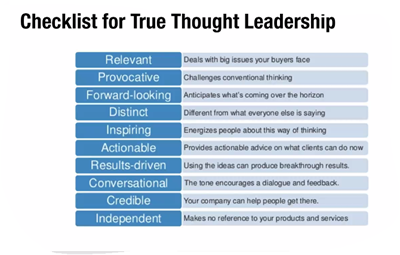
Yael Eckstein, Director of Marketing at StageOne Ventures
We hosted Mike Bargman and Daphne Algom from Headline Media, two straight-talkers who are close friends and have been working with StageOne for years.
We discussed the following topics, which I will expand upon below:
First things first: when it comes to PR, always remember that it’s never about the how! Rather, it’s always about the why! Identify your story and ask WHY people should care…The HOW will be sure to follow.

The tech media landscape has shifted a lot in the past few years. Digital has taken over and people are not paying for print newspaper subscriptions anymore. While this is likely not news to you, it is definitely something to keep in mind when seeking the best way to market your ventures.
That being said, here’s something that very well MAY be news to you. With digitization comes a shift in journalists’ business model. Journalists now publish twice as much content as before at half the pay (in the big news outlets this can be around 8 pieces of content a day)! They often work remotely, living outside the major cities, writing wire copies rather than in-depth, highly researched pieces, and are pitched a million times a day. Add to this the mega-rounds happening every day, even the large companies with big news sometimes do not make the cut.
As such, it is clear why journalists want you to make their lives as easy as possible.
Before we jump further into how we fulfill this very significant need, let’s talk a bit about the challenges of PR. For small, SEED, or Round A funded companies, taking on a PR agency can be an expensive and perhaps not even necessary marketing channel. You might be able to go at it on your own (DIY, to be discussed below).
If you do hire an agency, here are some points to keep in mind:

First, remember that PR leaves a massive impact, regardless of its purpose: fundraising, valuation, recruitment, retention, new clients, etc. Today, we are living in what is called a “new normal,” with so much money and so many good companies in Israel scaling and exiting at an extremely fast pace. As such, you need to start positioning yourself as a FOUNDER very early on. You need to find your founder-market fit! You are not just a CEO with a very deep tech background, you are a CEO scaling your company at a much faster pace than before and you need to be on the public and market holders’ radar very early on.
That being said, if PR is a must-have, but I do not have the budget to spend on a PR agency’s services, how can I generate coverage, DIY-style?
Consume –As founders or marketers, you MUST read and know what’s trending in your industry and understand the tone. You need to know what your competitors are writing about (or are bring written about), as it will give you an indication of how to position yourself.
Tip: Google alert a few keywords and your competitors’ names, so you can stay on top of the coverage being published.
Converse –Get on the journalists’ radars without pitching to them. What do I mean? Let them know you exist. Identify the top tech reporters in your fields and follow them. Provide them with feedback, start a conversation, and show them what you are doing. This is how you build a relationship.
Comment and Share –Keep thinking about the WHY. Why does your company matter? What are the top ideas you want to say?
Now lest talk “Tachless” (practical applications, as they say here in Israel), and crack some DIY PR tactics:
If you have insights about what is going on in the market, you don’t necessarily need to do PR reach. Find the “man-bites-dog” data, create a third-party data survey, and generate reports. There! You’ve already done half the work journalists need to be done before they can go to the press (remember what we said about making their lives easier?).
Think of it as an endless gift. You provide journalists with a value from your own data, enabling you to develop and maintain relationships with key journalists, and encouraging them to continue reaching out.
Make sure your data and reports say something interesting. Leverage the numbers they will find print-worthy. For example, one of our portfolio companies (who already made an exit found a problem in the market that people were not even aware of. Through data, reports, and content they published articles that exposed the issue and then educated the market on how their product serves as the ideal solution.
What is thought leadership? Thought leaders are informed leaders and the go-to people in their fields of expertise. They are trusted sources who move and inspire people with innovative ideas, turn ideas into a reality, and know-how to replicate their success. Thought leaders will always have their readers in mind. They are not in “it” to promote themselves, but rather to share something new and interesting.
It is important and a must-have, like thought leadership, can support your brand, even when you don’t have any news to share. Furthermore, it can open the doors to partnerships, recruitment, speaking opportunities, and much more…

1. Think: Build your brand and content — Talk about experience, teach and inspire others with industry-relevant content, reveal tidbits from your personal life, and more. See what is being discussed and take a stance. Remember, this is not an academic article, so you can say what you think.
2. Pitch: When you pitch your stories to editors, do it one outlet at a time, even if doing so lengthens your time-to-press. Make sure to have a great subject line as it is what motivates journalists to click and open your email.
3. Write well: Often, content is rejected due to poor writing quality. You need to have wisdom, significance, speculation, and facts in your content piece. Remember, the tone of your piece will reflect the tone of your brand.
A great tip is to always ask a friend to read and provide feedback before you publish. Below is a great checklist for true thought leadership, provided by none other than Mike and Daphne:

First things first, there are many news outlets, out there. Some are paid, while others are not. Try to avoid always going to the largest outlets and try out the smaller ones that may be writing more niche articles for your industry.

In the event that your content is not picked up by a news outlet, or if you simply do not want to pay, post it on your company blog, social media, email copy, forums, etc. Get out there and show the world what your brand is all about. One piece is not enough; you need to keep writing and sending content to journalists.
Yes, you need to do this, even if you have zero spare time, aren’t a proficient writer, or are a founder/CEO with a million things to do…
We Israelis are super techy and less marketing-oriented, but as the Founder of a company — especially one that is still small — you must remember you are also the face of your brand. The next fund will invest in the founder, especially with companies scaling at such a fast rate, and there is no substitute for Y-O-U. That’s why you need to make time! Even if you are not the one physically writing the piece, make sure your voice is out there.
There are plenty of great young talented content writers who are looking for the chance to write. Sometimes, it’s worth finding smart writers who are simply starting out, and building them into top-tier marketers. Give them a shot to learn and prove themselves, so everyone involved can grow!
The last topic I want to discuss is PR vs. Marketing: What is the Difference. This topic is super important for founders to understand.
Marketing comes with its fair share of KPIs. Its goal is mainly to attract customers, meaning 1 or 2 audiences. PR, on the other hand, has many audiences; customers, investors, employees, and others. The main difference in PR is that journalists serve as middlemen.
I hope you enjoyed the read. I have added the video link for anyone who wants to watch.
Until next time!
Web Design by LowTech | Developed by Ori Mintz | Photography by David Garb | Branding and Web Design by Titan BrandWise
